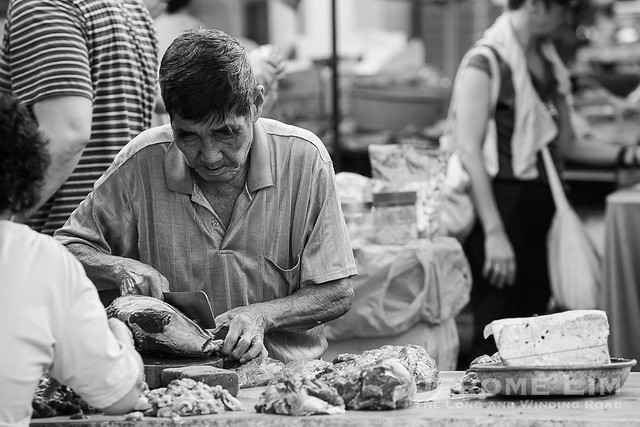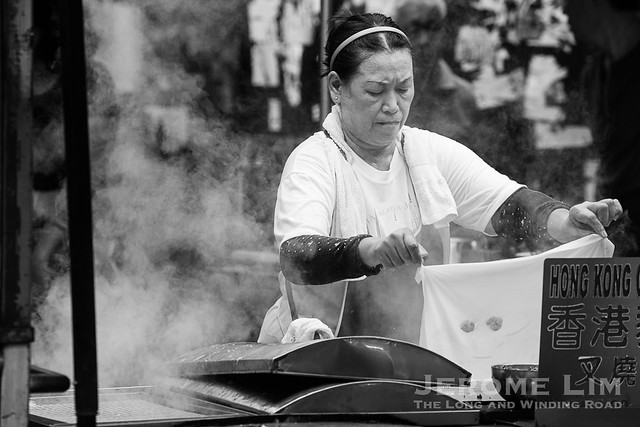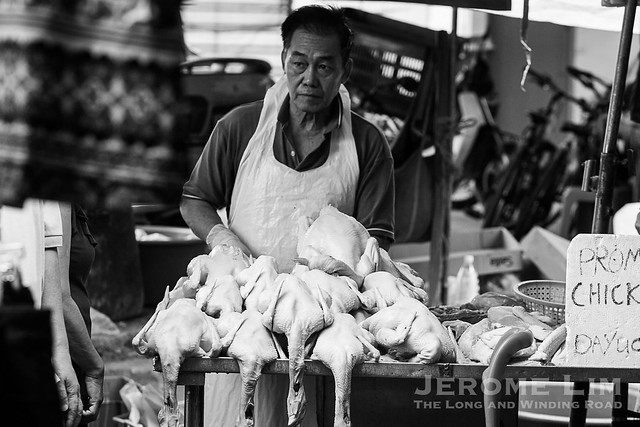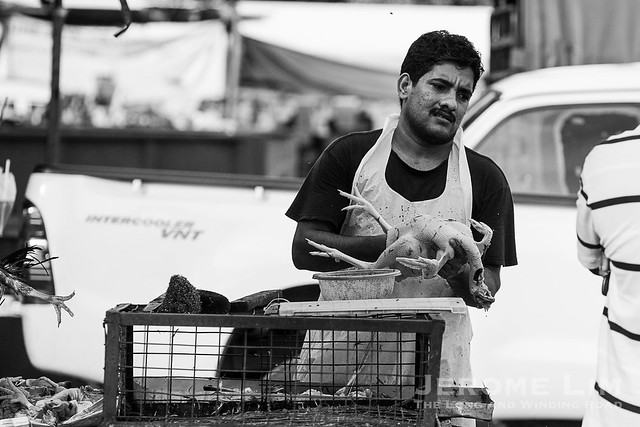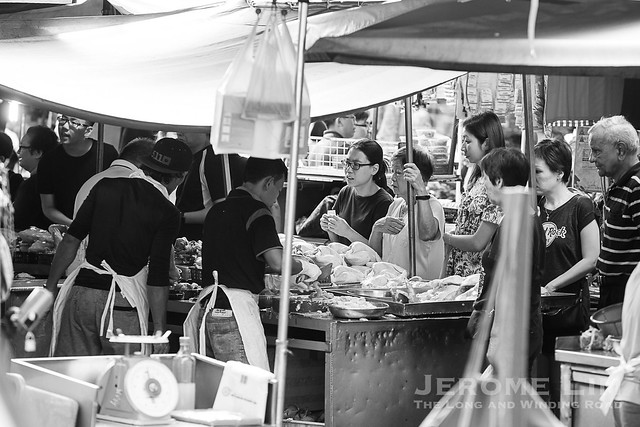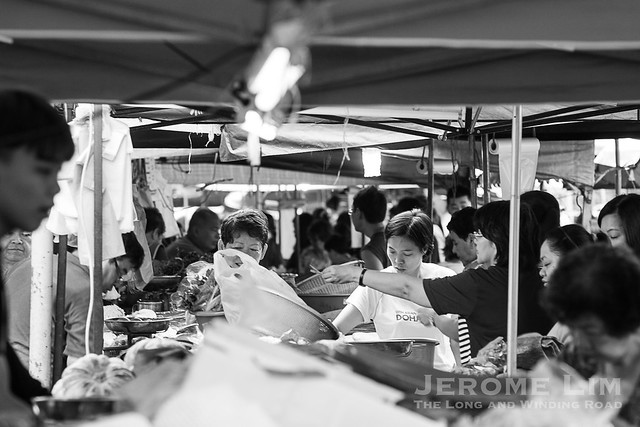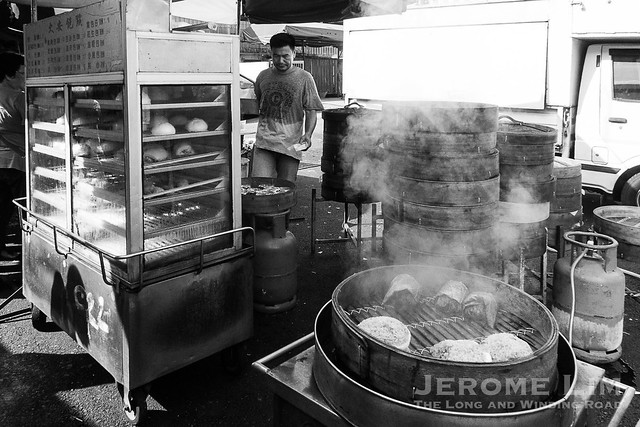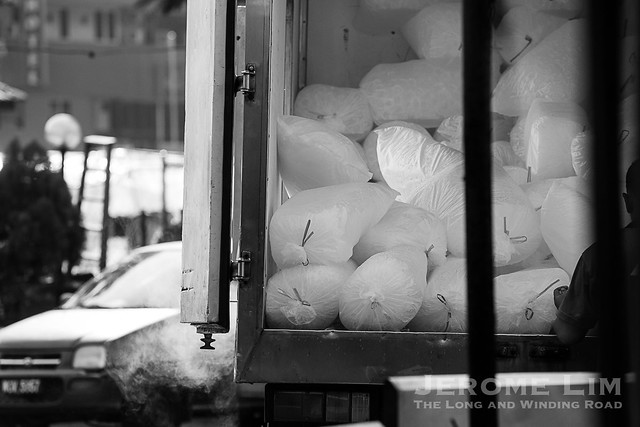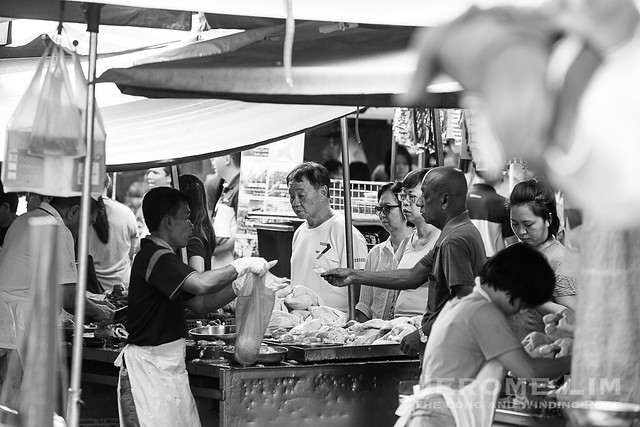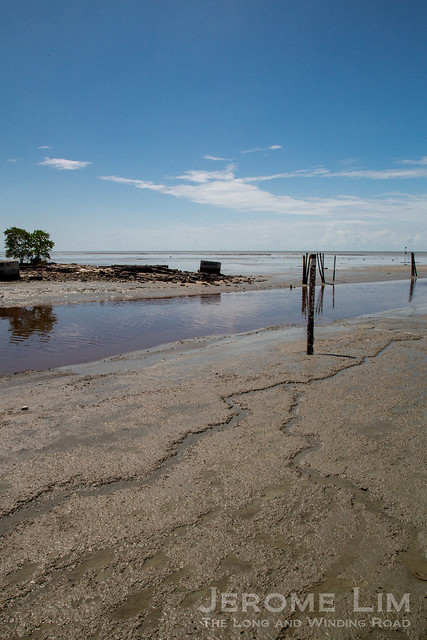Wet markets in Singapore, although still very interesting and colourful, do pale in comparison to the wet markets found around much of Asia. Wet markets are very often, around where life in the community it serves revolves. It is often where, when on the road, I would try to visit to provide me with a sense of a place and its people. I managed a visit to two markets during a recent trip across the Causeway, not perhaps to give me a feel of the place, but more to remind me of how we in Singapore used to be.

A “carrot cake” vendor – markets are always where a burst of colour can be found.

A fishmonger.
One of the markets I visited, a very popular one at Sea Park in SS2 Petaling Jaya, is an open air market – its hawkers operating under colourful shelters of large parasols and tarpaulins, is perhaps reminiscent of some of the street markets which once did exist on the streets of Singapore, minus perhaps the smell one never failed to catch a whiff of.

The SS2 wet market is reminiscent of the street markets found on the old streets of Singapore.

A dry goods vendor.
The market, as many in Asia, is also where live produce is sold – clucking and quacking poultry, wriggling eels and frogs in cages a common sight. A sight that is not for the faint hearted is the sight of the frog vendor skinning frogs alive.

Live frogs on sale.
The market does perhaps lack the disorder of the street markets of old – licensed hawker stalls are organised in sections depending on what they sold and orderly queues forming at the popular ones have increasingly become a common sight, although there were a few where the crowd seemed to be in the disordered order that would once have been commonplace.

A poultry seller with freshly slaughtered chickens and ducks on offer.

A cooked food section next to a dry sundry section.
In my wanderings around wet markets in Singapore and Malaysia, I often look for specific reminders of the wet markets I do remember. One trade which did fascinate me when I was young was the Indian wet rempah (spice paste) mixer, who would get to work mixing a paste made of some of the colourful array of pasty spice arranged around him or her, depending on what the customer related as to what he/she wanted to prepare. That I have not thus far been successful in locating, although I have come across a few spice powder mixers around. One Chinese vendor in the SS2 market did come close, she did have in addition to the colourful selection of dry powdered spices, have a few pre-mixed pastes of wet spice on offer.

The rempah vendor at SS2.

Bamboo pau (steamed buns) steamers.
Walking around I did catch a glimpse of a sight which did always catch my eye as a child – the preparation of dough fritters. Although this can still be observed in Singapore, the cubicles our market hawkers now operate in are opened to prying eyes only from one end and it is hard to observe the preparation in the same way I would have as that wide-eyed boy.

Preparing the dough for making dough fritters (You Tiao or U Char Kway) – one other sight which did fascinate me as a child was the how dough fritters would be prepared and fried.

Cutting the dough.

Deep frying the dough in hot oil.

Nicely browned dough fritters almost ready to be drained and sold.
It is perhaps a matter of time before wet markets in Malaysia, as they are in SS2, fall victim to progress as many such markets in Singapore have. Until that time, however, they will be there for some of us in Singapore to remember how life for us might once been.









